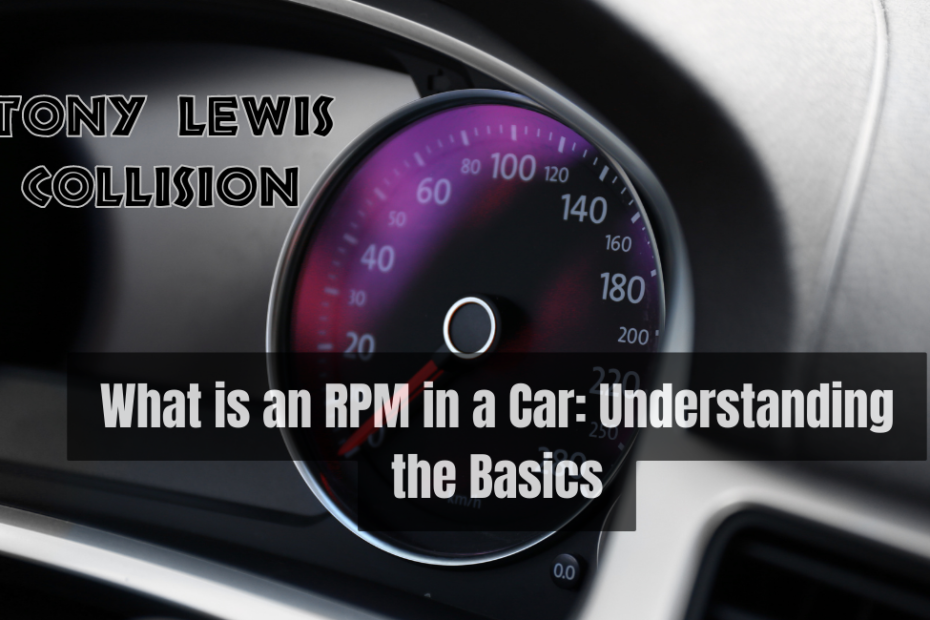Rpm is one term that frequently appears when discussing the internal components of a car engine. Revolutions per minute, or rpm, is a key idea in the field of automotive engineering. We will explore RPM’s nuances in this article, exploring its definition, significance, and impact on a vehicle’s overall performance. So fasten your seatbelt and prepare to discover the fascinating world of RPM!
What Is RPM?
The number of complete rotations an object does in one minute is measured in Rpm or revolutions per minute. Rpm describes the crankshaft’s rotational speed in the context of an automobile engine. It displays how many complete engine cycles the crankshaft completes in a minute with each rotation.
How Are Rpms Calculated?
A tool called a tachometer makes it possible to measure revolutions per minute. A car’s dashboard typically houses a tachometer, which displays real-time information on the engine’s rotational speed. It calculates and displays the RPM value in the Driver’s field of view using sensors or electrical signals.
Recognizing the Value of RPM
The importance of rpm in determining an engine’s overall performance and efficiency cannot be overstated. By monitoring the rpm, drivers, and mechanics can learn important information about an engine’s health, output, and fuel consumption. Better Control and Maintenance of the Vehicle are Made Possible by Understanding Rpm.
Engine Performance and Rpm
1. The Relationship Between Rpm and Power
Rpm has a direct impact on an engine’s power output. In general, the engine’s power increases as the rpm does. This is so that more combustion cycles per minute, which increase torque and horsepower, can occur at higher revs. It’s important to remember; every engine has a particular rpm range where it runs most efficiently.
2. How Rpm Affects Fuel Efficiency
Higher Rpms may produce more power, but they also use more fuel. Fuel efficiency may suffer if an engine runs excessively high rpm for an extended period. On the other hand, better fuel economy may result from keeping the rpm within the ideal range. To maximize engine performance, it is crucial to strike a balance between power and fuel efficiency.
Gear Shifting and Rpm
Rpm is key in manual transmission vehicles for gear shifting. The driver must synchronize the engine rpm and the rpm range appropriate for the target gear. Shifting gears at the proper rpm ensure a smooth transition and avoid engine strain or stalling. Smoother driving is facilitated by the Driver’s ability to effectively control rpm.
Redline and Rpm Range
Every vehicle has an ideal rpm range where the engine runs most effectively. This band is frequently referred to as the “Power Band.” It is crucial to remain within this RPM range to achieve the best performance. An engine’s redline indicates the highest revs it may safely handle without risking damage. Engine failure or other mechanical problems may result from going over the redline.
Retaining the ideal RPM
It is essential to drive the vehicle with consideration for the road conditions, speed limits, and engine load to maintain optimal rpm. The longevity and efficiency of the engine are increased by changing gears at the proper rpm intervals, avoiding excessive revving, and practicing smooth acceleration and deceleration techniques. Regular maintenance, such as oil changes and filter replacements, also contributes to the engine’s smooth operation.
Conclusion
To sum up, RPM, or Revolutions Per Minute, is a fundamental idea in the automotive industry. It determines the engine’s rotational speed and is crucial to the car’s performance and efficiency. Drivers may enhance their driving experience and ensure the longevity of their vehicles by understanding the relationship between Rpm, power output, fuel efficiency, and gear shifting. Therefore, the next time you rev your engine, remember the importance of rpm and drive safely.
Frequently Asked Questions
What Is a High Rpm, Exactly?
High RPMs Vary Depending on the Particular Engine and Vehicle. Rpms above 4,000 are typically regarded as high for daily driving. But some high-performance cars might have higher rpm limits.
Can high revs harm an engine?
Continuously running the engine at excessively high rpms will hasten wear and tear, which may eventually result in engine failure or damage. Avoiding Extended High Rpm Use Is Important, Especially Without Adequate Cooling or Lubrication.
How Can I Lower My RPMs While Driving?
You can shift into a higher gear, keep your speed steady, avoid sudden acceleration, and use smooth driving techniques to lower your RPM while driving. Additionally, regular tune-ups and maintenance may guarantee that the engine runs at its best, helping to reduce rpm levels.
What RPM Should I Run My Car at for Fuel Efficiency?
The optimal rpm for fuel efficiency changes depending on the engine and kind of vehicle. However, better fuel economy is typically promoted by keeping rpm in the lower range of the power band.
Is Regular RPM Monitoring Required?
Regular RPM monitoring is advised, particularly when driving erratically or experiencing engine-related problems. It gives information on the engine’s performance and potential issues, enabling prompt maintenance and preventing expensive repairs.
Learn more: Who Makes the Stinger Car?
